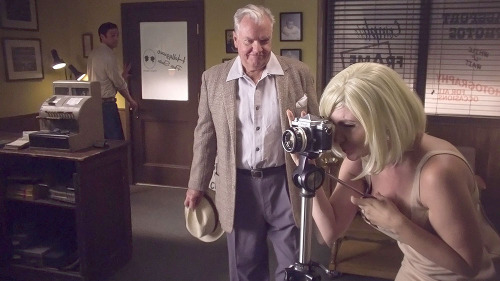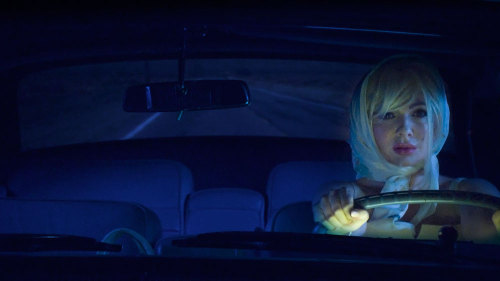As a Director of Photography just starting a new project, most times I read the script and have creative meetings with the Director about the look of the film and how to best capture that look. I try to do as much camera/lens testing as possible, have more meetings, and finally come up with a camera package that fits the look of the film as well as the budget. In the case of Passport, as I was reading the script, the only camera that was going through my mind was the Digital Bolex D16.
Passport is a short film about a fictitious evening in the life of Marilyn Monroe during the filming of The Misfits. As I read the script, the images I saw in my mind harkened back to the color films of the late 50’s, early 60’s with muted colors, low contrast, and a mild softness, an almost creamy feel to them. Already I knew I wanted to shoot the film with vintage lenses, and I just happened to own a set of Switar lenses from that era.
At the time I was unsure of the workflow of the D16 or even how well the camera would perform on a film set, but based on what I had read about it; it’s ability to capture RAW 2k images in 12-bit color with a global shutter, and what I already knew about the Switar lenses I currently had attached to my trusty Bolex 16mm film camera, I knew this had to be the perfect setup to shoot a film about one of Hollywood’s most iconic starlet’s.
Fortunately, Director Lisa Demaine had seen some of the early footage from the Digital Bolex and agreed that, even though we were being offered a Panavision Genesis, or an Alexa package, the D16 was the camera for our film.

The Digital Bolex is the brainchild of Joe Rubenstein and Elle Schneider, a couple of Indy filmmakers who wanted an affordable camera that would fill the void created by the introduction of digital cameras in film production, that was once replete with 16mm film cameras. What they came up with is a camera with a super 16mm sensor that records in the RAW Cinema DNG format–basically a digital 16mm camera. During the brief chance I had to test the D16 with my Switar lenses I noticed a significant shift toward red in the color of the image. Keeping that in mind, we stayed away from a lot of red in production design and makeup, however, the fact that we were shooting 12-bit RAW gave me the confidence that we will still have a lot of control over the image color when it comes time to grade the film.
Production Workflow
One challenge we encountered while shooting with the D16 was media management. The RAW footage is recorded internally to a 500g SSD, and to download you need to attach the camera via USB3 to a computer (there is an option to download using CF cards, but I did not explore this method). Our workflow meant that we would shoot all morning and download during lunch before getting into the afternoon work. We typically shot around 300g before offloading at lunch, and again at wrap which meant, even with an hour lunch, there was not enough time to offload using a checksum verification app like Shotput Pro. I just dropped the files onto a hard drive and manually verified file size when the transfer was finished (this takes roughly half the time of Shotput Pro) before formatting the drive for the afternoon work. I would prefer to have a removable drive on the camera so media can be more reliably transferred, and done without tying up the camera to that purpose.
Shooting with the D16 is fun (a lot of people were interested in seeing the camera, and it was a great conversation starter), and easy (the menu is very straight forward and easy to navigate, and you don’t get lost in a world of options like some other cameras), but mostly I really like the images I was able to create with it, such as this image from the opening scene of the film, which we shot using a rear screen projection technique.

The camera also appears to have excellent sound recording capabilities, with balanced inputs and easily adjusted knobs to set levels. I say “appears to” because we still recorded sound seperately with only a reference track feeding into the camera from our mixer. But the idea that the folks at Digital Bolex thought to put balanced inputs and adjustment knobs on their camera shows their commitment to Indy filmmakers who want to create the best quality films possible.
Prior to shooting with the Digital Bolex I watched Phillip Bloom’s review of the camera and at one point he poses the question, where does the Digital Bolex fall in the big picture? My answer to that would be that it falls right into the hands of Indy filmmakers who still care about the images they create. In the same price range as a D16, you can only buy a camera that records in a highly compressed codec at a much lower bit rate. I’ve shot plenty of projects with those cameras and they are great in their own right, and before there was an option, but I’ve seen those compressed images fall apart in grading if you try to do too much with them. The D16 offers a much better option by shooting RAW Cinema DNG files.
Original Look Book used in preproduction of Passport:
[gss ids=”2277,2276,2275,2274,2271″ options=”timeout=5000″ style=”width:500px”]

